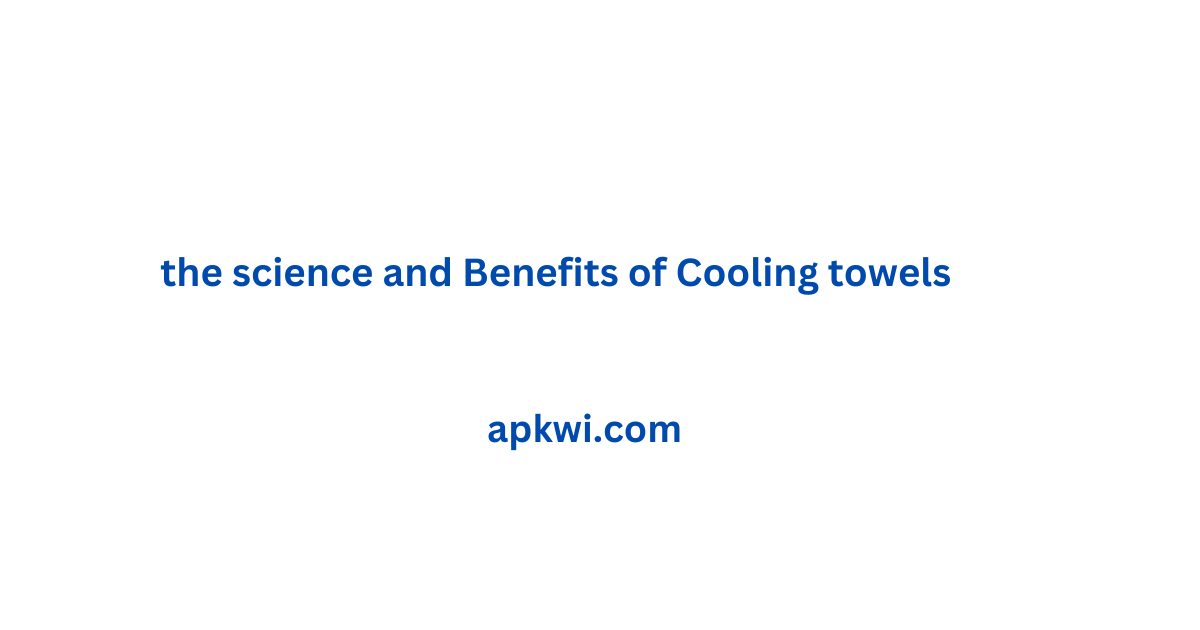the science and Benefits of Cooling towels, especially during athletic activities, being cool is more than a luxury; it is essential for your performance and well-being. Fans or air conditioners, which can effectively cool you off, are not always portable (handy). That’s where cooling towels come in—a current solution gaining popularity due to their ability to provide instant relief from heat stress. This article dives into the science behind cooling towels, their benefits, and some handy tips for getting the most out.
What are Cooling Towels?
the science and Benefits of Cooling towels is a specialized fabric designed to rapidly lower body temperature through evaporation. Typically, they are made from materials such as Polyvinyl Alcohol (PVA), microfiber, or other synthetic blends with high absorption and retention properties for water. So how do these work? They cool by using evaporative properties similar to sweat.
How Do They Work?
Evaporative Cooling: These cooling towels gain their power of cooling through evaporation when soaked in water and wrung out of excess moisture. Wet material cools down the body because upon drying up, the towel takes away heat from the body, giving a refreshing sensation.
Material Properties: The choice of material significantly impacts a cooling towel’s effectiveness. For example, PVA towels absorb large amounts of water because they have a spongy structure, whereas microfiber ones are lightweight and dry quickly.
Benefits of the science and Benefits of Cooling towels
Immediate Cooling:
Unlike traditional methods that may take time to work, cooling towels provide instant relief upon application.
Portability:
They are compact and lightweight, making them easy to carry during outdoor activities, sports, or travel.
Reusable and Durable:
Most cooling towels can be reused simply by re-soaking in water, and they are designed to withstand multiple uses.
Versatility
Suitable for a variety of situations including workouts, gardening, hiking, or simply lounging in hot weather.
Safety:
Cooling towels are generally safe for all ages and do not rely on electricity or chemicals for their cooling effect.
Types of the science and Benefits of Cooling towels
PVA Towels:
These are soft, absorbent, and retain water effectively, offering prolonged cooling.
Microfiber Towels:
Known for their quick-drying properties and soft texture, they are popular for active lifestyles.
Instant Cooling Towels:
Pre-treated with cooling agents like menthol or eucalyptus, these provide an extra cooling sensation without the need for water.
Practical Tips for Using Cooling Towels
Preparation: Before using, soak the towel in water and wring out excess moisture for optimal cooling.
Wear: Place the towel around your neck, forehead, or over the head to maximize heat dissipation.
Reactivation: If the cooling effect diminishes, re-soak the towel in cold water and wring it out again.
Maintenance: Comply with the manufacturer’s instructions concerning cleaning and storage to prolong usage life.
Conclusion
the science and Benefits of Cooling towels offer invaluable assistance against heat stress in diverse locations—whether you’re pushing yourself too hard as an athlete or just trying to cool off during summertime, these will give you instant relief and comfort. Understanding their mechanisms of action and how best to use them can help improve your experience while ensuring that you stay calm even when it is really necessary (Oghenekaro, 23). The science behind these products is what makes them truly important as far as staying cool during any season is concerned; it is recommended that you embrace this concept if you want something that will help you stay comfortable all year long.
